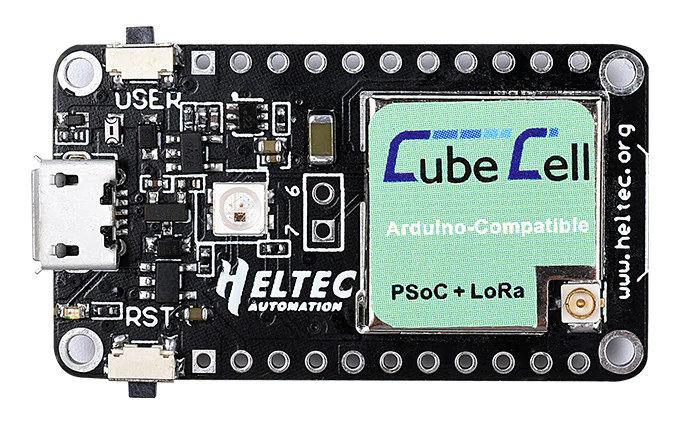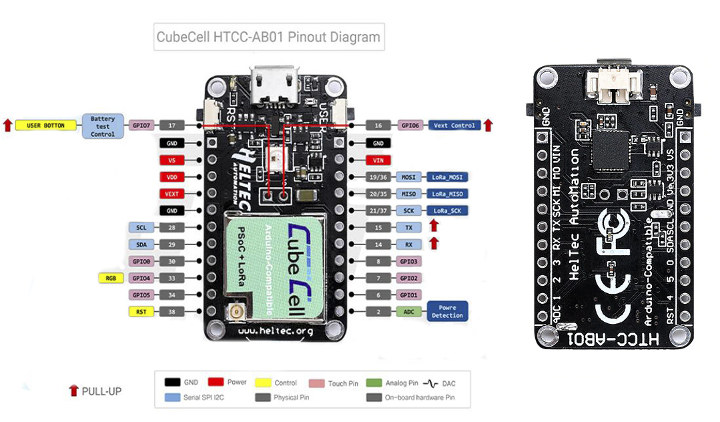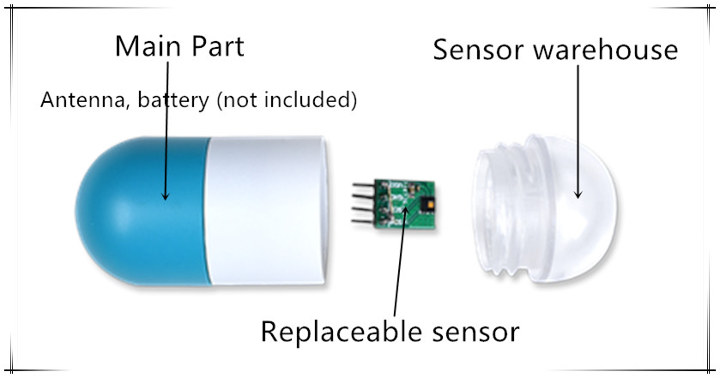HelTec CubeCell is an Arduino-compatible LoRa module based on Semtech SX1262 transceiver and a Cypress PSoC 4 mixed-signal MCU.
The module itself currently sells for $6.90, but you’ll also find a more convenient board for $9.90, as well as a $13.90 IP67 “capsule” housing a battery, an antenna, and a sensor board. All three are available on the same Aliexpress page.
 CubeCell LoRa board specifications:
CubeCell LoRa board specifications:
- SoC – ASR Microelectronics ASR6501 with
- MCU – Cypress PSoC 4 Arm Cortex-M0+ @ 48 MHz with 128KB flash, 16KB SRAM
- LoRa Transceiver – Semtech SX1262
- LoRa Connectivity
- Bands – EU433, CN470-510, EU863-870, US920-928
- Output Power – 21 dB +/- 1 dB max
- LoRaWAN standard protocol support
- USB – 1x Micro USB port for power and programming
- Expansion – 2x 11-pin headers with GPIO’s, UART, I2C, SPI, ADC, Reset, and VIN, 5V, 3.3V, and GND power signals
- Misc – User and boot buttons, RGB LED
- Power Supply – 5V via micro USB port or LiPo battery via 2-pin header
- Power Consumption @ 3.3V(module)
- 3.5 uA in deep sleep
- 10 mA in LoRa Rx mode
- 70 mA for LoRa Tx @ 10 dBm
- 90 mA for LoRa Tx @ 14 dBm
- 100 mA for LoRa Tx @ 17 dBm
- 105 mA for LoRa Tx @ 20 dBm
- Dimensions – Module: 18 x 18 x 2 mm ; development board: 41.5 x 24.1 x 7.2 mm

The board can be controlled with AT command, but it also supports Arduino programming in Windows, Mac OS, and Linux. You’ll find documentation and code samples on Github, as well as on Heltec’s own website.
The company provides an example of battery life considering a connection with the LoRa gateway every 15 minutes. In this case, an 80mAh/3.7V battery would last for 3 months, but they did not mention in which mode they performed the calculation.
The capsule above is 30 mm in diameter and 67 mm long. I understand it houses a CubeCell module or another AR6501 based module, but the battery and antenna are apparently not included on Aliexpress, so you’d have to handle this yourself if you purchase the capsule kit. I’m also unclear which sensor if any is included.
Via LoRaWan Thailand Facebook group where one user got hold of the board.

Jean-Luc started CNX Software in 2010 as a part-time endeavor, before quitting his job as a software engineering manager, and starting to write daily news, and reviews full time later in 2011.
Support CNX Software! Donate via cryptocurrencies, become a Patron on Patreon, or purchase goods on Amazon or Aliexpress





